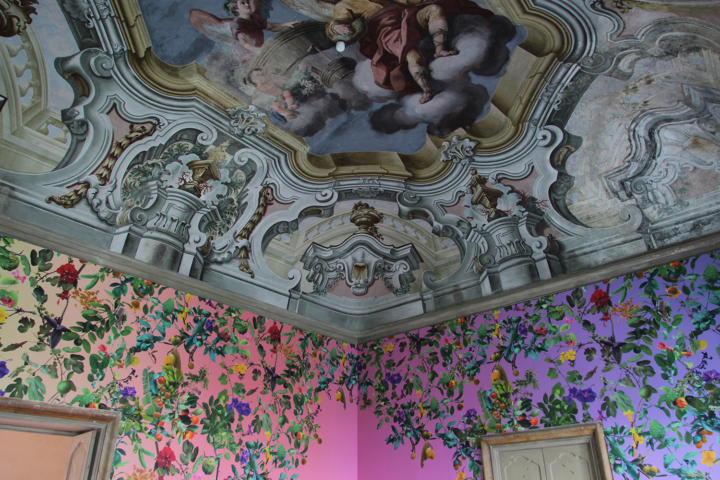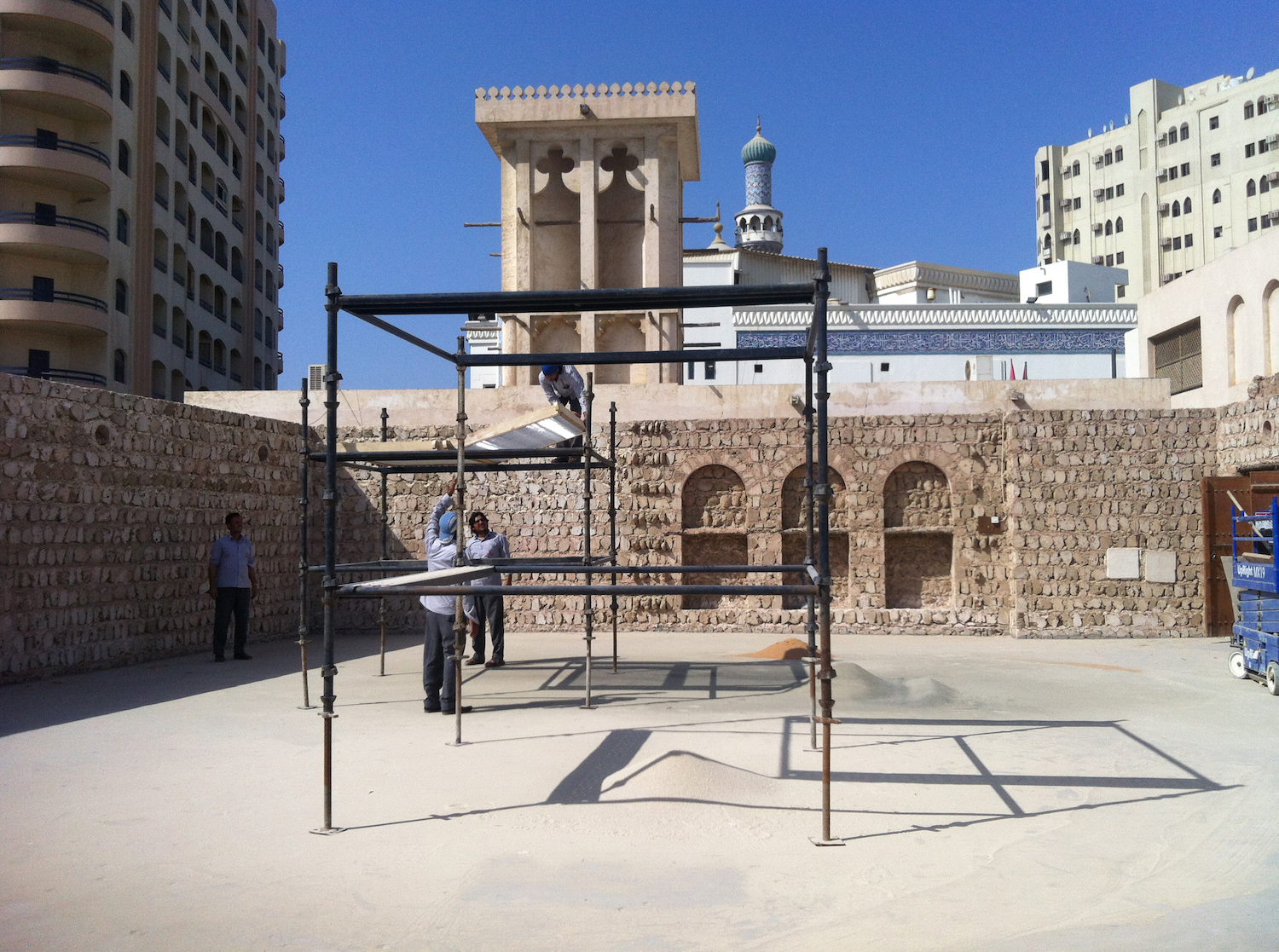Palermo, June 16, 5:25 PM. Three men at the corner of Via Degli Schioppettieri recite in steady voices, “I wonder what mothers you’ve had. / If they could see you now at work / in a world so unknown to them, / taken in an endless circle / of experiences so different from their own, / what kind of look would they have in their eyes? / If they were there while you, conformist and baroque, / write your piece / or pass it along to editors who break / at every compromise, would they recognize you?” It is the “Ballata delle madri” (Ballad of the Mothers, 1964) by Pier Paolo Pasolini, performed to accompany my last afternoon in Palermo. It comes back to me now while I write this text, “conformist and baroque.”
The performance of this bitter poem by the Friulian writer and filmmaker was a “station” in Palermo Procession (2018), organized by Marinella Senatore for Manifesta 12. The procession is drawn from an ancient urban ritual that drags the city from Piazza Pretoria out to the sea, involving hundreds of citizens in a narrative of pluralities that aspires to living form.
Manifesta 12 both physically and symbolically inhabits Palermo, a city that has gone by various names — “Sys,” “Panormos,” “Balarm,” “Balermus” — its toponymy signaling its Phoenician, Greek, Roman, Arab, and Norman influences. Inspired by this dense interweaving of cultures that has transformed the Sicilian capital into a map of diversity, Manifesta occupies historical palazzos and other non-institutional spaces such as the ZEN housing development and the hill of Pizzo Sella. The nomadic biennial proposes itself as a kind of workshop of coexistence and, significantly, was launched not far from the dock where the migrant rescue boat Aquarius was recently turned away by the new Italian government.

The curatorial concept developed by Ippolito Pestellini Laparelli, Mirjam Varadinis, Andrés Jaque, and Bregtje van der Haak departed from the survey “Palermo Atlas” conducted by OMA. An interactive research project, and probably what would become the real legacy of Manifesta 12, the study aims to act as a fluid link between disciplines and calls for shared responsibility as an antidote to “datacracy” (or the rule of data) and environmental transformation, reaffirming Gilles Clément’s metaphor of the world as a “planetary garden.”
However, Manifesta 12 also acts as a privileged observatory of political and socially engaged art that, in this context at least, is unable to prove itself equally as valid in terms of its aesthetic discourse; it rests, instead, on a sticky moralism or the recycling of poststructuralist tropes, as if ethical propensity and self-questioning were enough in and of themselves to justify artistic value. With particular emphasis on process and collaboration, several works on display end up as didactic or merely documentary. They become testaments to what Jacques Rancière defined in Aesthetics and Its Discontents as the “ethical turn”: a flattening of the conflict between art and politics, reshaped into new, concordant, and orderly forms.
The challenge — of criticism as well — should rather be one of considering socially engaged projects as artistic works, against the easy conviction that these practices should simply be judged by the results of their intentions; or, as Benjamin writes about in “The Author as Producer,” for the purpose of including participants in the process of production. In other words, it means believing in a critical art that can (also) tell us about the future of artistic forms. Therefore, one must address and elaborate upon the ambiguities and the paradoxes that inherently accompany the tension between art and politics, positioning the work as a third entity that guarantees “the production of a double effect: the readability of a political signification and a sensible or perceptual shock caused, conversely, by the uncanny, by that which resists signification” (Rancière).

It is upon this terrain of ambiguity that the most successful works in Manifesta 12 are established. The sound installation The Third Choir (2014) by Lydia Ourahmane — the first work of art to be legally exported from Algeria since 1962 — is made up of twenty empty petroleum barrels, once belonging to the company Naftal, and by twenty cellular phones, each sitting at the bottom of the barrels; set on the same FM frequency, the cell phones recreate the monotonous noises belonging to an industrial atmosphere. The work embodies the struggle against the suffocating Algerian bureaucracy and functions as a symbolic representation of migration. The three-part experimental semi-documentary by Melanie Bonajo, Night Soil (2016), is an exploration, humorous at times, of various strategies of disconnection from the logic of capitalism. The film’s characters engage in an unedited and radical relationship with elements of nature, which the Dutch artist manages to merge together by way of intense visuals, creating both a display and an empathetic mise-en-scène. Contrastingly, the connection between man and the vegetal world reaches a point of no return in the eco-queer visions of Zheng Bo, who in his work Pteridophilia (2016–ongoing) shows seven young boys engaged in the act of frenetic coupling with the ferns of a Taiwanese forest; and elsewhere it is creatively reworked, as in The Drowned World (2018) by Michael Wang, which lit up the green waters of one of the pools of the Botanical Garden, thanks to cyanobacteria. Finally, for her installation-performance i’m happy to own my implicit biases (malo mrkva, malo batina) (2018) — housed in the late-sixteenth-century building Oratorio di San Lorenzo — Nora Turato finds inspiration in the figures of the Sicilian donas de fuera (mythical female beings who suffered persecution under Spanish rule). By constructing an immersive and emotionally modulated space, an ensemble of timbre and movement, Turato invites people to refuse sexism and gender stereotypes.
In keeping with the ideas of Manifesta 12, these works reveal a renewed sense of otherness. They speak of constructed identities built on the fatigue of meeting with those unlike us, via a process of mutual co-individuation. Secretly, they seem to suggest that it is the plants we should be asking about the meaning of the word “coexistence.” Always on the periphery of Western thought, yet a paradigm of being-in-the-world, plants are “the purest observation post for contemplating the world in its entirety. Under the sun or the clouds, mingling with the water and the wind, their life is an endless cosmic contemplation that does not disassociate itself from objects and substances or, in other words, accepts all nuances, and comes to merge itself with the world and coincide with its substance” (Emanuele Coccia, La vita delle piante, Bologna: Il Mulino, 2018). Perhaps the feeling of coexistence lies between these lines, in this unconditional surrender to life, indeed taught by plants.



